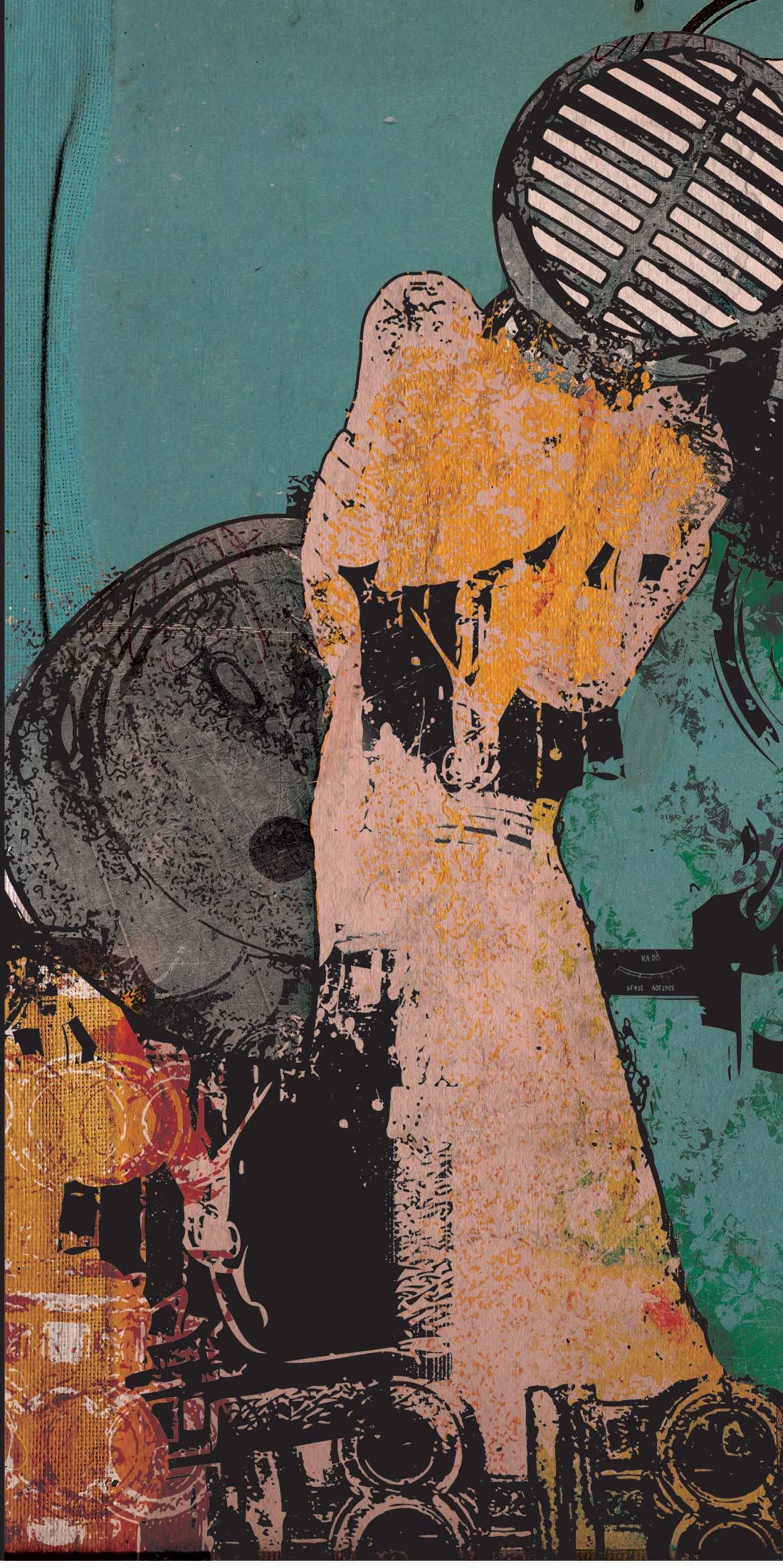Here's a neat solution for solving problems with your recording environment's acoustics. Take two sheets of rigid fiberglass, wrap them neatly in fire-rated acoustic fabric, glue them together to form a sandwiched panel with some anchoring hardware, attach an aluminum yoke to that hardware which allows you to angle the panel, include a system for mounting the whole assembly to a standard mic stand, and call it a ModTrap. ModTraps come in two sizes-24" x 30" and 16" x 24"-both 2" thick. I have a Studio B Kit, which includes one of the larger and two of the smaller. The ModTraps look super smart-very professional and not at all DIY-and the mounting system is cleverly done with high-quality componentry. Even though the panels are not framed with metal or wood, they hold their shape, and they haven't dented after a year of use. (The edges of the fiberglass panels are
hardened with epoxy before wrapping.) ModTraps work great as "spot" gobos, as they are easily positioned next to mics, instruments, windows, speakers, cymbals, etc.-or nearby anything that generates, reflects, or captures sound. They're quite effective at controlling unwanted ambience, especially because rigid fiberglass is much more absorptive than foam (of the same depth) across the whole frequency spectrum, especially in the lower mids where small rooms suffer most. My only suggestion to ModTrap is to add more mount-points on the yoke; there's only one now, and one more (at a right-angle to the original) would be most helpful for placement and angling, especially in tight mic'ing situations, which is where the ModTrap excels. In its current implementation, you can't mount one vertically on a boomless stand. J. Robert Lennon ("Inverse Room" on the Tape Op Message Board) is also a fan, and his opinion follows. -AH
A crappy-sounding room is probably the most common problem in project studios-and the hardest one to fix. If you're stuck in a basement or attic, a good room sound is out of the question, and you're going to need some kind of treatment. In my case, I've put convoluted foam everywhere, but it only goes so far, especially since I'm constantly moving things around and messing up the careful balance I'm always trying to maintain. That's why I found the ModTrap interesting-a repositionable room treatment system being made by an independent manufacturer in Minnesota. I asked for a few to experiment with, and they arrived promptly. The ModTraps are sturdy but fairly lightweight panels covered in black fabric and equipped with an adjustable swivel bracket. I tested one 24" x 30" panel and two 16" x 24" and had them attached to some mic stands with the provided hardware. A caveat here-you ought to have some pretty sturdy mic stands, or use sandbags if your mic stands are threatening to tip over. The ModTraps can also be attached to walls or other surfaces.
I tried them on three tasks that I find problematic: tracking vocals, guitar mic'ing, and monitoring. For vocals, I made myself a little "booth" with the big panel in the middle and the two small ones angled at the sides. I faced this as I sang, with the mic in the middle. While my isolation was by no means total, a good deal of the lousy reflections I usually get while singing vanished, and I had a nice dry vocal to work with. The same technique worked well with acoustic guitar. I tried mic'ing an amp too and found that it was useful to get the traps in very close behind my SM57; I actually made a little 45-degree shelter out of the two smaller panels, creating a triangular space out of their two surfaces and the grille of the amp (this is a small amp!) with the mic in the middle. Again, a usefully uncolored sound. My room is really tiny, and by necessity, my pair of small TAPCO active monitors are close to the wall. This tends to give them a hollow, constricted sound at anything over very low volume. Putting ModTraps behind them definitely gave me a flatter response without having to change my setup, and I could crank my mixes a bit.
The only problem I could find with the ModTraps is that you need several of them to get really good results in some circumstances, and if you have them on mic stands, things can get a little crowded, especially if you're using the boom to counterbalance them. But their portability and positionability are a huge advantage. The brackets are really strong, the hardware is heavy and solid, and they just feel well-made. A creative recordist will find all sorts of other uses for them-bass trapping for instance-and they lend themselves extremely well to this kind of experimentation. The ModTraps get a thumbs-up from me!
($99 and up; www.modtrap.com)
Tape Op is a bi-monthly magazine devoted to the art of record making.




_disp_horizontal_bw.jpg)